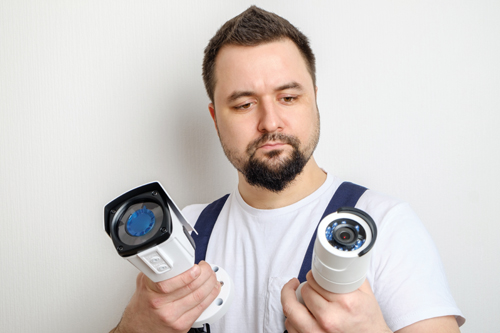 Today’s world has dramatically changed the concepts of security and technology, as organisations no longer only install surveillance cameras and physical security devices; they require much more than that to stay prepared. Current news stories are evidence of how times are changing — they’re littered with headlines of increased potential threats, ranging from cyber attacks and ransomware to organised crime syndicates.
Today’s world has dramatically changed the concepts of security and technology, as organisations no longer only install surveillance cameras and physical security devices; they require much more than that to stay prepared. Current news stories are evidence of how times are changing — they’re littered with headlines of increased potential threats, ranging from cyber attacks and ransomware to organised crime syndicates.
With the risk landscape constantly evolving, a company’s security system needs to be prepared for modern criminals. Today’s enterprise organisations simply can’t afford the consequences of weaknesses or vulnerabilities in a network or safety strategy. Regardless of the market that a business is in, establishing a comprehensive and robust security solution must begin with an assessment of the company’s unique needs, which oftentimes begins with identifying what kind of security camera would work best for the user.
Buyers want to partner with system designers and/or consultants that can provide recommendations as they relate to camera selection, but that are also aware that an end user’s board is concerned with finances just as much as security considerations. A designer that can not only build a system but also establish a clear value proposition for key decision makers will be far more successful in gaining and retaining partnerships. With a thorough assessment through the following steps, this task can be accomplished.
Consider specific applications
Every vertical market is different and, as such, will have different camera needs. For example, financial institutions are made up of many distinct areas, such as the lobby, teller window, ATM, drive-thru teller, and parking lot. Each of these environments must be monitored at all times given the risk they could present to the safety of the facility. This is not easy to achieve with just one or a few traditional devices. These unique utilisations require a solution that is tailored to the particular setting, which, in many cases, can be accomplished directly through the supplier. Over time, manufacturers build up their portfolio to specialise in one or a few vertical markets. With this approach, buyers don’t need to vet the entire market for such specialised solutions, which can be time consuming.
Once a supplier is identified, individual products can be examined for specific feature needs. For example, if a bank is located in a large and expansive building with high ceilings, they should consider PTZ or panoramic cameras to reduce costs while simultaneously covering a lot of ground. Or, if the business is located in a cold climate, cameras should be equipped to deal with below-freezing temperatures. It is important to recognise both the application and the environment when suggesting camera types, as well as what market specific suppliers cater to.
Read the full article in the May 2020 edition of PSI magazine

